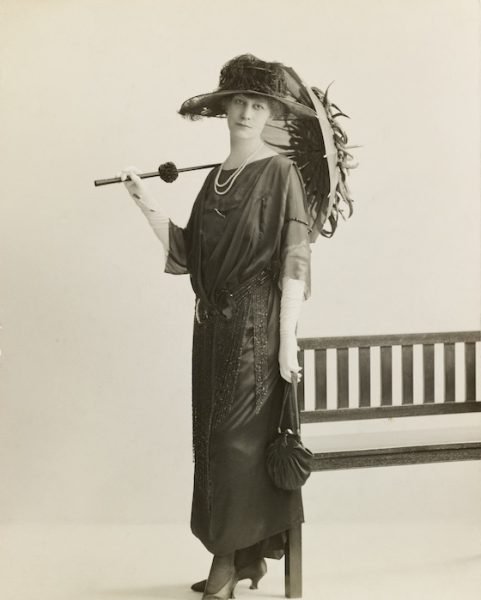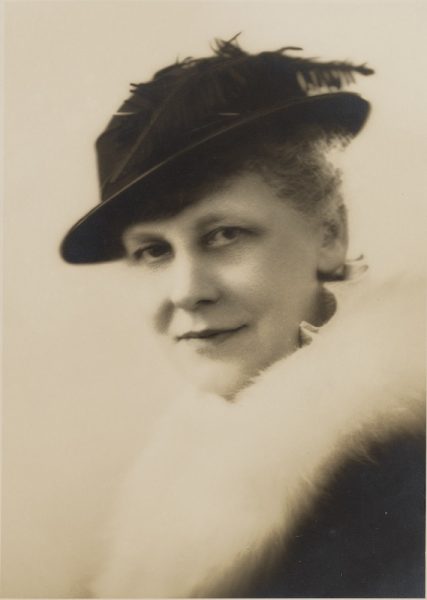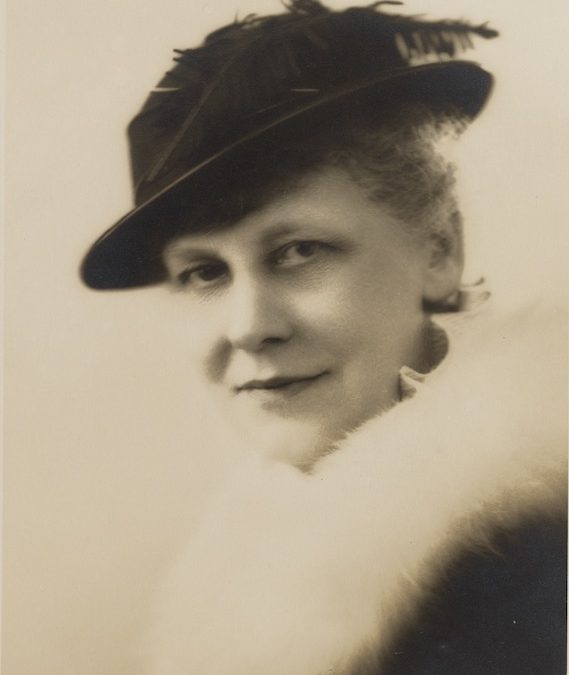Written by Judith Dunn OAM, RAHS Councillor
To celebrate Women’s History Month in 2024, the Royal Australian Historical Society will continue our work from previous years to highlight Australian women who have contributed to our history in various and meaningful ways. You can browse the women featured on our Women’s History Month webpage.
Florence Parsons arrived in Parramatta in 1884 at the age of 4 years from Somerset, England, with her parents John, a stone quarryman and Eliza, a washerwoman.[1] John obtained work with Parramatta Council as a draftsman-clerk and later in the sewerage construction branch of the Department of Public Works. Florence, a very bright child, attended Parramatta Public School while assisting her father with engineering calculations. Following the deaths of her mother in 1896 and father in 1899, Florence, then aged nineteen, needed to find work to support herself and two younger sisters.[2]

Florence M. Taylor, ca.1926 (State Library of New South Wales).
The most likely work in those days for young women was in domestic service but Florence was determined to become a draftsman. She worked in Francis Stowe’s Parramatta architectural practice who had been an acquaintance of her father and enrolled in night classes at Sydney Technical College. Later articled to architect Edward Garton, she became the first woman to complete studies in architecture in 1904. She became chief draftsman for the prestigious office of John Clamp, who recommended her to become the first female member of the Institute of Architects in 1907 but was refused in a groundswell of antipathy from her male counterparts.[3] She was not admitted as a full member of the Institute until 1923. Despite this setback, she built up a successful business designing over 100 homes. Some of these still exist in Cremorne and Roseville.[4] In 1907, with her then employer Clamp, she worked on the basement of Farmers Department Store in Pitt Street Sydney, the first example of a woman contributing to commercial architectural design in Sydney. In the same year, she provided the perspective drawings for the prize-winning entry in a competition for the Commercial Traveller’s Building in Sydney. Again in 1907, she won several prizes in the architectural section of the ‘First Australian Exhibition of Women’s Work’ in Melbourne.
Florence continued to study at Technical College and then Sydney University, becoming qualified as a civil and structural engineer. Together with her degree in architecture, she was the first woman to gain qualification in any of these three disciplines in Australia.[5]
In April 1907 she married George Augustine Taylor, artist, aviator, inventor and craftsman at St Stephens Presbyterian Church in Sydney. George had been one of her lecturers at college and was a close friend of Francis Stowe, in whose business Florence worked. There were no children of the marriage. As a couple, Max Freeland described them as being ‘possibly the most amazing couple in Australia’s history.’
With marriage came two new ventures – flying and publishing. Florence became the first Australian woman to fly a heavier-than-air craft. George had built a glider in his Redfern workshop, and she flew it from the Narrabeen Sandhills on 5 December 1909, although this seems to have been merely a hobby, with publishing and architecture being their main interests.[6]
Within months of their wedding, George and Florence established their Building Publishing Company, specialising in building industry journals, three of which, Harmony, Young Australia and Australian Home, Florence edited. In 1913, they became founder members of the Town Planning Association, with Florence as its secretary for many years.[7] George died suddenly in 1928 when he drowned in his bath during an epileptic fit. Florence continued with their publishing endeavours, although she was forced to close eight of their eleven journals. She continued to publish Building, Lighting and Engineering, Construction and the Australasian Engineer, somehow finding time to also publish her own book, Fifty Years of Town Planning with Florence Taylor.
Although accolades and memberships were slow to arrive in her early years, many honours eventually came her way. The suburb of Taylor in Gungahlin, Canberra, is named for her, as is the library of the Master Builders Association. The Australian Institute of Metals has a Florence Taylor Medal, awarded for outstanding contributions by one of its members. The Master Builders Association awarded her with a Plaque of Honour for distinguished service to the science and practice of construction in Australia.[8] This plaque went on to be awarded to any member they wished to reward for distinguished service to the industry. She became an honorary member of the Australian Institute of Builders and a Fellow of the Royal Society of Arts, London.

Florence M. Taylor, ca.1935 (State Library of New South Wales).
Despite working largely in a man’s world, she remained feminine in her dress, contemporaries noting she wore long sweeping skirts and a picture hat decorated with ostrich feathers into the 1930s.[9] However, they also remembered her energy, determination and outspokenness.[10] Noted as an ‘inveterate founder and joiner’, she was closely associated with the Arts Club, Royal Aero Club of NSW, Society of Women Writers, NSW branch of the Australian Forest League, Australian-American Assn, Royal Empire Society and the Bush Book Club among others.[11]
Although Florence Taylor spent the majority of her extraordinary working life living in Sydney, Cremorne and Potts Point, we should claim her as a Parramattan as she spent her formative years at both school and work in this district. Parramatta was not big enough to contain the many exploits of this remarkable woman – she needed to be in the centre of Sydney for her work, particularly publishing and the many business meetings with which she was involved. Awarded the OBE in 1939, this was elevated to CBE in 1961. Florence Taylor retired at 81 and died on 13 February 1969 at the age of 89 years, a most remarkable yet little-known woman of Parramatta.[12]
References:
[1] English census, 1881.
[2] Christa Ludlow, ‘Taylor, Florence Mary (1879–1969)’, Australian Dictionary of Biography, National Centre of Biography, Australian National University, https://adb.anu.edu.au/biography/taylor-florence-mary-8754/text15337, published first in hardcopy 1990, accessed 19 March 2024.
[3] ‘Florence Mary Taylor: First Woman To Fly In Australia, First Female Australian Architect, Engineer – A Women’s Champion’, 2021, Pittwater Online News, https://www.pittwateronlinenews.com/Florence-Taylor-Flier-Architect-Womens-Advocate.php, accessed 19 March 2024.
[4] Robert Freestone and Bronwyn Hanna, Florence Taylor’s Hats: Designing, Building and Editing Sydney, Halstead Press, 2007.
[5] Women of Parramatta, Ladies Auxiliary, Parramatta Trust.
[6] Women of Parramatta, Ladies Auxiliary, Parramatta Trust.
[7] Numerous letters to the editors can be found in Trove during F.M. Taylor’s tenure as Secretary of the Town Planning Association.
[8] Women of Parramatta, Ladies Auxiliary, Parramatta Trust
[9] ‘Florence Mary Taylor’, Pittwater Online News.
[10] Sydney Morning Herald, 7 December 1936.
[11] Ludlow, ‘Taylor, Florence Mary’.
[12] Ludlow, ‘Taylor, Florence Mary’.
Updated: 30 January 2025.


What a remarkable woman, and a local from the western suburbs!